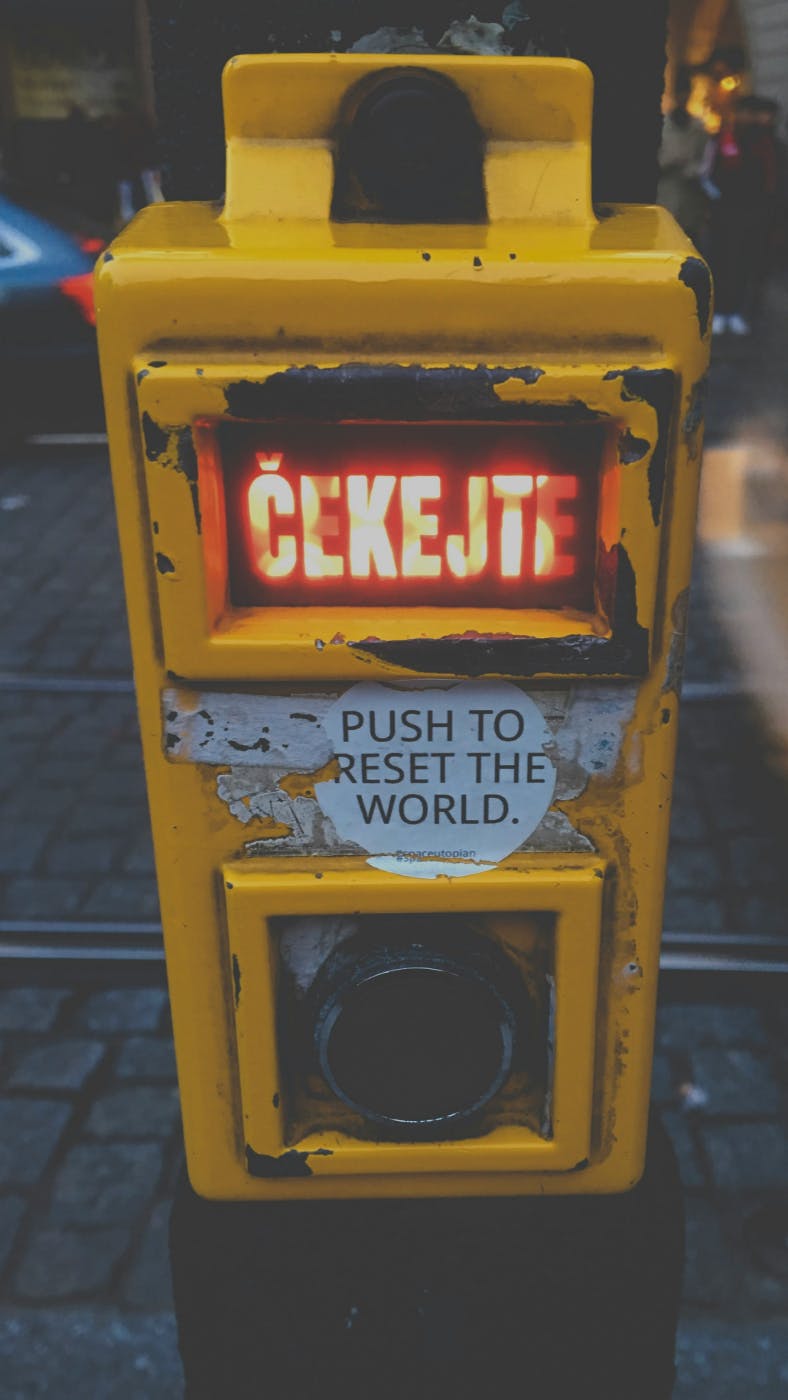
... a much larger reality every prestige brand has to contend with: once your product is out in the world, it’s no longer just yours.
Max is a guy I know. Not a friend, exactly—more of a remora, clinging to whichever buddy can get him into the latest event. If there’s a must-attend scene, Max is there, basking in borrowed cool.
He wraps himself in the trendiest fashions, tosses around the internet’s freshest slang, and never misses a selfie opportunity. He’s a walking billboard for whatever’s hot, loud, performative, vaguely sticky. And yet, there he is. Always.
I was recently dragged—kicking and screaming—from my little abode to attend a charity event. Don’t ask what it was for. Clogging classes for clams? English lessons for otters trying to land jobs after we bulldoze the last of their habitat? I have no idea. I was eye candy on the arm of a friend. And if I’m eye candy, the charity was either for the blind or for those who need help with tragically low standards.
As luck—or cosmic cruelty—would have it, Max was there. I spotted him from the corner of my eye and immediately deployed my usual defense: pretending to be a hat rack. Unfortunately, another guy had already claimed that bit—and he was really committing to it—so Max clocked me almost instantly.
He slithered over, lifted his right arm, and revealed a gleaming new Submariner. “Just like James Bond,” he said, twisting his wrist for dramatic effect.
What followed was a monologue about how much the watch cost, how chicks dig it, and how it basically makes him indistinguishable from 007. For a fleeting second, I considered selling everything I own to buy one. Maybe I, too, could be Bond.
Then Max laughed—at a bad joke, of course—and revealed a mouthful of crab puff and half-melted pâté. The fantasy shattered. There’s not a watch in the world that could turn this loquacious troglodyte into a smooth British spy.
And that’s when it hit me: Rolex loves being tied to James Bond. It’s branding gold. But do they care that their precious timepiece is now strapped to Max’s wrist? Do they even know? Does it matter?
I decided to find out.

When Brands Meet the Masses
Max might be an extreme case, but he’s not unique. He’s part of a much larger reality every prestige brand has to contend with: once your product is out in the world, it’s no longer just yours. It can end up on anyone’s wrist, parked in anyone’s driveway, worn to a party you’d never attend. And for a brand like Rolex—carefully curated, tightly wound in luxury and myth—that’s both a blessing and a potential curse.
Rolex has long positioned itself as the pinnacle of timeless elegance, engineering excellence, and quiet status. It’s a brand that doesn’t just sell watches—it sells belonging to a very particular echelon of society. And for years, they’ve kept that aura intact with limited supply, high price points, and deliberate cultural associations. Bond is just one of them. Olympic athletes, deep-sea explorers, high-stakes financiers—these are the types of characters that help Rolex craft its story.
But the story doesn’t always stick to the script. Eventually, a product escapes the bounds of branding and enters the cultural bloodstream. And once that happens, it becomes something else. It becomes an object of aspiration. That’s when the Maxes show up.
Max isn’t drawn to Rolex because of its movement or craftsmanship, or horological lineage. He’s drawn to the myth. He wants to be the man who wears the watch. The watch, to him, is the shortcut to substance. And in a culture obsessed with image and speed, who can blame him?
This isn’t just a Rolex problem. It’s a Louis Vuitton problem. A Tesla problem. A Supreme problem. The more desirable your brand becomes, the more it risks being consumed by people who don’t fit your imagined audience, and reshaped in the process. When that happens, you don’t just lose exclusivity. You lose authorship.
But here’s the thing: once you’ve lit the fire of desire, you don’t get to control who gathers around it. That’s the trade-off of aspiration. You want your brand to be seen as valuable, enviable, and iconic? Then prepare for it to be misused, misread, and misunderstood—sometimes by the people most eager to be seen with it.
And that’s where the real tension lies: can a brand like Rolex maintain control over its identity when it lives on the wrist of someone like Max?
Can a Brand Choose Its Audience?
Brands like Rolex work hard to suggest they’re only for a certain kind of person. Not explicitly, of course—no one’s posting “No Maxes Allowed” signs in the showroom—but the implication is always there. The marketing is cool, composed, and tailored. The spokespeople are sleek. The settings are yacht decks, moonlit casinos, and private jets. If a Rolex ad featured Max in his ironic graphic tee, triple-spritzed cologne, and viral dance moves, you’d assume it was satire.
This is the illusion brands sell: that you can control perception through precision. That by carefully curating associations—James Bond, Wimbledon, deep-sea divers—you can keep the riffraff out. But in practice? Brands don’t get to handpick who buys their products. Especially not in the age of resale markets, influencer giveaways, and overnight virality.
The more culturally potent a brand becomes, the more it loses its grip on exclusivity. You might design for the boardroom, but your sneakers end up on TikTok. You build a car for tech elites, and it becomes a YouTube prop for prank videos. You craft a watch for legacy and discretion, and it gets flaunted poolside by someone whose last job was “aspiring crypto mogul.”
And it’s not just that the audience shifts. It’s that the meaning does. A brand’s identity lives in use, not just intent. Once something leaves the boutique and enters the wild, it picks up new baggage—louder, messier, and far less polished than the lookbook ever suggested.
Still, some brands try to push back. They launch “quiet luxury” campaigns. They limit production runs. They drop new lines through exclusive apps or private events, creating artificial scarcity. It works—until it doesn’t. Because even the most carefully gated experience can be screen-captured, flipped, reposted, and repurposed by someone who wasn’t supposed to be there.
That’s when brands face a hard truth: you can’t always choose your audience, but you can choose how you respond to them.

When Brands Push Back (and When They Don’t)
Some brands fight back when the wrong crowd shows up. Not openly, of course. Rarely will you see a press release that says, “Please stop wearing our product.” But there are subtler, strategic ways to draw a line in the sand.
Burberry, for example, spent the early 2000s watching its signature check pattern become shorthand for “chav” culture in the UK. Once a mark of upper-class refinement, the plaid showed up on baseball caps, tracksuits, and supermarket tabloids. The brand didn’t yell or shame—but it did pull the pattern from most of its product lines and started over. They stripped it down, rebranded, and clawed their way back to credibility by ghosting their most visible fans.
Other brands use scarcity as a scalpel. Supreme’s drop model, for instance, is essentially controlled chaos. The brand doesn’t just embrace cultural wildfire—it builds the matchbox, strikes the spark, and throws it into the crowd. But even that level of control is a kind of pushback: “You can want it, but you might not get it.”
Then there are brands that go quiet. Rolex doesn’t run from people like Max because Rolex doesn’t speak at all. That silence is calculated. They don’t need to correct the record because their image isn’t tied to press statements—it’s tied to perception. They let the myth do the heavy lifting. If enough people still believe the watch equals class, power, and elegance, then Max is just a glitch in the matrix—a blip on the radar.
It’s a risky approach. Staying silent when your brand is co-opted by the wrong influencer, the wrong subculture, the wrong billionaire, can look like tacit approval. But overreacting can be worse. Brands that scream about misuse can come off as elitist, exclusionary, or just plain out of touch.
So they walk a tightrope. If they say nothing, they risk dilution. If they say too much, they risk backlash. And in both cases, the Maxes of the world still keep buying, still keep posting, still keep talking with their wrists.
Which raises the question: how much control does a brand really have once its product becomes a symbol?
The Co-Author Problem
Branding used to be a monologue. You created the logo, wrote the tagline, bought the media space, and the public sat back and listened. Identity flowed one way: from the brand out. But that world’s long gone—and the modern brand operates more like a group chat. Everyone’s in it. Everyone’s loud. And your carefully crafted narrative? It’s just one voice among many.
Everyone’s Holding the Pen Now
Social media didn’t just give consumers a platform—it gave them permission. Permission to remix, reframe, parody, praise, and drag brands in public. A hoodie gets memed. A slogan gets reinterpreted. A luxury watch becomes a status prop for someone with zero understanding of horology but 200K followers and a ring light.
And because everything is content, everything is performance. A product isn’t just worn or used—it’s filmed, filtered, captioned, and posted. Every photo is a new sentence in the brand story, whether it fits the original narrative or not.
Max, with his Rolex and crab puff teeth, is a co-author now. Not because the brand gave him permission, but because culture did. And culture always overrides brand guidelines.
The Rise of Unapproved Chapters
This is where it gets messy. Brands put in years—decades—building a specific aura. But the more visible and desirable they become, the more likely that aura is going to be warped by the people interacting with it. Some chapters are harmless: a new audience finds the brand through pop culture. Some are brand-positive: a fresh community adopts the product with pride. But others are damaging, cringe-inducing, or totally off-message.
And the brand doesn’t get to delete them.
That’s the risk baked into modern relevance. The more symbolic your product becomes, the more interpretive license the public takes. Symbols get stolen. They get distorted. They get worn ironically, or by people completely oblivious to what the brand stands for. And yet—they’re still wearing it.
Control Isn’t What It Used to Be
So what does a brand do?
The old instinct was to reassert control. Double down on exclusivity. Speak louder. Close the gates. But in today’s media ecosystem, that often backfires. Consumers don’t want to be told how to feel about a brand. They want to participate in shaping it. And if you don’t let them, they’ll do it anyway—just without you.
Which means control isn’t about censorship anymore. It’s about curation. It’s about listening more closely. Learning the difference between off-brand noise and unexpected value. Responding when it matters, and stepping back when it doesn’t.
Smart brands know they can’t own the entire story. But they can steer it by staying culturally fluent, knowing their own identity inside and out, and being flexible enough to evolve without losing their core.
Collaboration, Not Collapse
Co-authorship doesn’t have to mean chaos. The brands that thrive in this environment aren’t the ones who clutch their identity with white knuckles—they’re the ones who open the door just enough to let the right people in.
It’s not about letting Max dictate the brand. It’s about understanding what Max represents. What cultural itch he’s scratching. What aspirational vacuum your brand is filling, and whether that’s something to encourage, ignore, or gently redirect.
Because in the end, this isn’t just about one guy with a watch. It’s about the evolving nature of ownership. In the 21st century, brand identity is no longer a solo act. It’s a shared narrative—part strategy, part spectacle, part social experiment.
And the brands that last will be the ones who learn to co-write without losing the plot.

Summing Up
Max may never be Bond, but that doesn’t stop him from trying. And that’s the strange, often uncomfortable power of brand symbolism: it invites people to step into the myth, whether they belong there or not.
What started as a single moment—one guy flaunting a Rolex—opened up a much bigger question: how do brands protect their identity when identity itself has become a public playground? In an age where everyone participates in storytelling, no brand is immune to misalignment, distortion, or cultural hijack. But maybe the answer isn’t to chase control—it’s to manage meaning.
The most resilient brands aren’t the ones that shut people out. They’re the ones who understand the narrative is no longer theirs alone. They don’t panic when Max shows up. They pay attention. They learn. They evolve.
Because at the end of the day, branding isn’t about perfection. It’s about resonance. And that resonance lives in tension—in the gap between who you think you are and how the world sees you.
At ThoughtLab, we live in that tension. We help brands navigate identity in real time—crafting stories that are grounded, human, and built to stand up in the chaos. Whether you’re fighting for relevance, protecting your edge, or building something entirely new, we’re here to help you co-write a brand story that actually works.
Not every wrist deserves a Rolex. But every brand deserves a strategy strong enough to withstand one.

